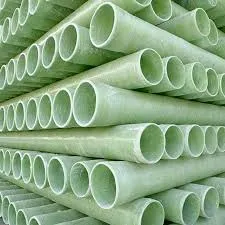
-
 Afrikaans
Afrikaans -
 Albanian
Albanian -
 Amharic
Amharic -
 Arabic
Arabic -
 Armenian
Armenian -
 Azerbaijani
Azerbaijani -
 Basque
Basque -
 Belarusian
Belarusian -
 Bengali
Bengali -
 Bosnian
Bosnian -
 Bulgarian
Bulgarian -
 Catalan
Catalan -
 Cebuano
Cebuano -
 China
China -
 China (Taiwan)
China (Taiwan) -
 Corsican
Corsican -
 Croatian
Croatian -
 Czech
Czech -
 Danish
Danish -
 Dutch
Dutch -
 English
English -
 Esperanto
Esperanto -
 Estonian
Estonian -
 Finnish
Finnish -
 French
French -
 Frisian
Frisian -
 Galician
Galician -
 Georgian
Georgian -
 German
German -
 Greek
Greek -
 Gujarati
Gujarati -
 Haitian Creole
Haitian Creole -
 hausa
hausa -
 hawaiian
hawaiian -
 Hebrew
Hebrew -
 Hindi
Hindi -
 Miao
Miao -
 Hungarian
Hungarian -
 Icelandic
Icelandic -
 igbo
igbo -
 Indonesian
Indonesian -
 irish
irish -
 Italian
Italian -
 Japanese
Japanese -
 Javanese
Javanese -
 Kannada
Kannada -
 kazakh
kazakh -
 Khmer
Khmer -
 Rwandese
Rwandese -
 Korean
Korean -
 Kurdish
Kurdish -
 Kyrgyz
Kyrgyz -
 Lao
Lao -
 Latin
Latin -
 Latvian
Latvian -
 Lithuanian
Lithuanian -
 Luxembourgish
Luxembourgish -
 Macedonian
Macedonian -
 Malgashi
Malgashi -
 Malay
Malay -
 Malayalam
Malayalam -
 Maltese
Maltese -
 Maori
Maori -
 Marathi
Marathi -
 Mongolian
Mongolian -
 Myanmar
Myanmar -
 Nepali
Nepali -
 Norwegian
Norwegian -
 Norwegian
Norwegian -
 Occitan
Occitan -
 Pashto
Pashto -
 Persian
Persian -
 Polish
Polish -
 Portuguese
Portuguese -
 Punjabi
Punjabi -
 Romanian
Romanian -
 Russian
Russian -
 Samoan
Samoan -
 Scottish Gaelic
Scottish Gaelic -
 Serbian
Serbian -
 Sesotho
Sesotho -
 Shona
Shona -
 Sindhi
Sindhi -
 Sinhala
Sinhala -
 Slovak
Slovak -
 Slovenian
Slovenian -
 Somali
Somali -
 Spanish
Spanish -
 Sundanese
Sundanese -
 Swahili
Swahili -
 Swedish
Swedish -
 Tagalog
Tagalog -
 Tajik
Tajik -
 Tamil
Tamil -
 Tatar
Tatar -
 Telugu
Telugu -
 Thai
Thai -
 Turkish
Turkish -
 Turkmen
Turkmen -
 Ukrainian
Ukrainian -
 Urdu
Urdu -
 Uighur
Uighur -
 Uzbek
Uzbek -
 Vietnamese
Vietnamese -
 Welsh
Welsh -
 Bantu
Bantu -
 Yiddish
Yiddish -
 Yoruba
Yoruba -
 Zulu
Zulu
Products for Steel Melting Plant Optimization and Efficiency Enhancement
Innovations in GRP Products for Steel Smelting Plants
In the evolving landscape of industrial applications, the role of Glass Reinforced Plastic (GRP) has become increasingly significant, particularly in steel smelting plants. The steel industry is a cornerstone of global infrastructure, and its processes are continuously being optimized to enhance efficiency, safety, and environmental sustainability. GRP products are emerging as a valuable resource, offering a wide array of benefits suited to the demanding operations of steel smelting.
Understanding GRP
Glass Reinforced Plastic, commonly known as fiberglass, is a composite material made from a polymer matrix reinforced with glass fibers. This dual composition endows GRP with exceptional properties, including high strength-to-weight ratio, corrosion resistance, and thermal stability. These characteristics make GRP an ideal choice for various applications within steel smelting plants, where exposure to harsh chemicals and extreme temperatures is commonplace.
Applications in Steel Smelting
1. Storage Tanks and Vessels One of the most significant applications of GRP in steel smelting plants is in the construction of storage tanks and vessels. The corrosive nature of the chemicals used in steel production can lead to rapid degradation of traditional materials like steel and concrete. GRP’s inherent resistance to corrosion extends the lifespan of storage solutions, reducing maintenance costs and downtime.
2. Piping Systems Efficient transportation of raw materials and by-products is critical in steel smelting operations. GRP pipes are lightweight and flexible, making them easy to install and handle. Their smooth inner surfaces enhance flow efficiency and reduce the likelihood of blockages, which is essential in maintaining operational continuity.
3. Structural Components The use of GRP in building structural components, such as beams, supports, and gratings, provides a strong yet lightweight alternative to conventional materials. GRP’s strength allows for the reduction of weight in structural designs, leading to decreased foundation loads and, consequently, lower construction costs. Furthermore, the durability of GRP translates to minimal maintenance, ensuring longevity in even the most demanding environments.
Environmental Benefits
grp products for steel smelting plant

The steel industry has faced increasing scrutiny regarding its environmental impact. GRP products contribute to greener practices within smelting plants. For instance, GRP’s durability reduces the need for frequent replacements, thereby minimizing waste. Moreover, as GRP can be manufactured with recycled materials, its use supports the transition toward more sustainable industrial practices.
Additionally, the energy efficiency of GRP materials contributes positively to the overall energy consumption of steel smelting plants. By incorporating GRP solutions, facilities can potentially reduce their carbon footprint, aligning with global efforts to limit greenhouse gas emissions.
Safety and Compliance
Safety is paramount in steel smelting operations, where workers are often exposed to hazardous conditions. GRP products enhance safety by providing excellent insulation properties, which help in mitigating the risks associated with thermal and electrical hazards. The non-conductive nature of GRP adds an essential layer of safety, particularly in environments where electricity and high temperatures coalesce.
Furthermore, GRP can be manufactured to comply with various international safety standards, ensuring that smelting plants operate within the required regulatory frameworks. The high fire resistance of GRP also contributes to safer working conditions, as it reduces the risk of combustion under high temperatures.
Conclusion
As the steel industry continues to innovate and adapt to modern challenges, the integration of GRP products stands out as a promising avenue for improvement. From storage solutions and piping systems to structural applications and safety enhancements, GRP offers a versatile, durable, and environmentally friendly option for steel smelting plants.
Investing in GRP technology not only promotes operational efficiency but also aligns with sustainability goals, making it a strategic choice for companies aiming to balance productivity with environmental responsibility. As industries worldwide look for ways to enhance their resilience and sustainability, GRP products will undoubtedly play a crucial role in shaping the future of steel smelting. The ongoing research and development in material science will further enhance the capabilities of GRP, solidifying its status as an indispensable asset in the steel manufacturing landscape.









